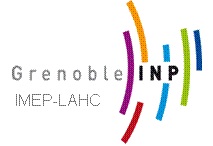Partenaires
by Prof. Stephen E. SADDOW
Electrical Engineering Dept., University of South Florida, Tampa, FL 22620 USA
Date infos
Open to all : teachers, students, researchers, administrative, technicians
Location infos
Belledonne room IMEP-LaHC, Bât. BCAi, Minatec,
3 rue parvis Louis Néel CS50257
38016 Grenoble Cedex1

